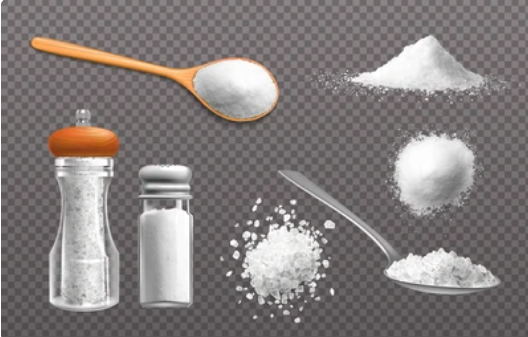You need it to survive, but too much and you risk major
health issues. We look at where salt is, and how to use less.

Salt is made up of sodium and chloride. Of these two
elements, it is the sodium that is the problem. We need a small amount of
sodium to stay alive – to conduct nerve impulses, contract and relax muscles,
and maintain the proper balance of water and minerals.
But because most of us eat twice the recommended amount of
salt, we end up with too much sodium in our blood. The body then holds onto
water to dilute the sodium, increasing the volume of blood in the bloodstream.
This can lead to high blood pressure, a major risk factor for heart disease,
stroke, kidney disease and premature death.
“High blood pressure is the biggest cause of death in the
world,” said Graham MacGregor, a UK professor of cardiovascular medicine and
chair of the campaigning group Action on Salt, in the Guardian online.
“Sixty per cent of strokes are due to high blood pressure,
and 50 per cent of all heart disease is due to raised blood pressure.”
Even if high blood pressure is not a concern for you,
MacGregor explains that a high salt diet can cause you to excrete more calcium.
This makes it more likely that your bones will thin as you age, putting you at
risk of osteoporosis.
How to eat less salt
- Cut back on overly processed and
packaged foods. This is where you will find 75 per cent of the salt we consume.
The worst offenders are salty snack foods, packaged ‘ready meals’, burgers and
pizza, processed meats such as ham and bacon, and certain sauces and
condiments.
- Read labels. Surprisingly, foods
we do not think of as salty can contain high amounts too, such as bread and
breakfast cereals, so it pays to compare products. Food labels in many
countries list total sodium content, so choose products with less than 400mg
sodium per 100g, ideally less than 120mg per 100g.
- Cook your own meals. Cooking with
fresh, unprocessed ingredients means you can control the amount of salt you
use, and eating fewer takeaway and pre-packaged meals will automatically lower
your salt intake.
- Use salt alternatives. Herbs,
spices, lemon juice and vinegars in your cooking can add flavour with less
sodium. You can also buy low-sodium versions of traditional high-salt products,
like soy sauce. Over time your tastebuds adapt to less salt, and food starts to
taste better.